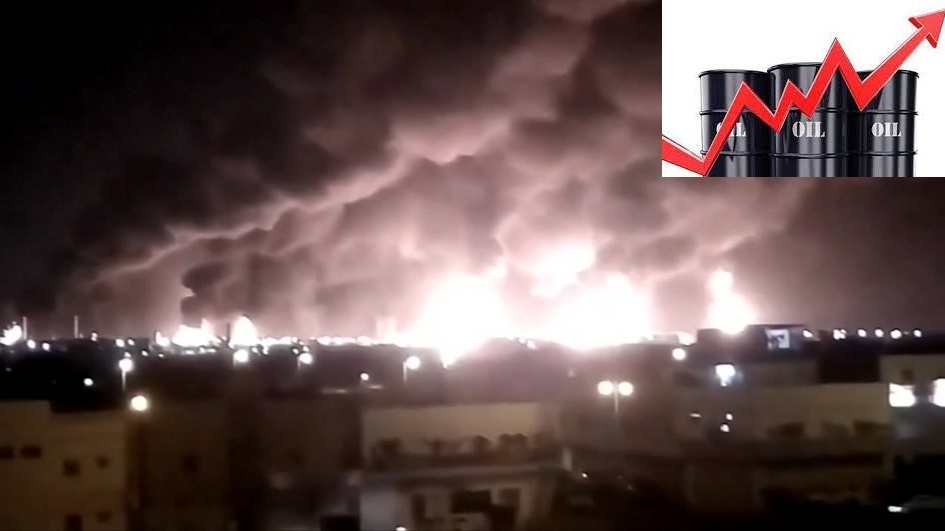Oil prices jump as attack on Saudi plant jolts world
| Date :18-Sep-2019 |

NEW YORK :
GLOBAL energy prices spiked on Monday by 15% after a weekend attack on key oil facilities in Saudi Arabia caused the worst disruption to world supplies on record. It was an increase on par with the 1991 Gulf War and analysts said heightened tensions in the Middle East could keep prices elevated for the foreseeable future. The wider economic fallout will depend on just how long the Saudi supply disruption lasts. Crude was up more than $8 per barrel by midday trading, to about $63, and Brent picked up more than $9 per barrel, to $69.
The attack on the country’s largest oil processing plant disrupted more than half of its daily exports, halting 5% of world crude oil output. It followed a string of other attacks in the Persian Gulf, which threatened global oil supplies and stirred tensions in the region. But the scope of the most recent incident was more severe. That’s especially worrying for oil-thirsty Asia, where China, Japan, South Korea and India are major customers of Saudi oil.
“What got hit is really important and serious, and this is not going to be a ‘We’re fixing it in two days’ kind of thing,” said Amy Myers Jaffe, senior fellow at the Council for Foreign Relations. “It’s the difference between my stabbing you in the leg or the shoulder, versus stabbing you in the neck.” The Associated Press explains the far-reaching impact of the attack on the global economy. The US and Asia’s reliance on Mideast oil Asia is the biggest consumer of Persian Gulf oil, absorbing three-quarters of the oil that travelled out of the region last year. Saudi Arabia provides about a fifth of China’s crude imports, more than 37% of Japan’s and almost a third of South Korea’s.
And while oil production in the US is booming, it is not enough to replace what could potentially be lost if there are further disruptions in the Middle East. It also is not the type of crude oil everyone wants. Most of the new oil produced in the US is light and sweet. But many oil refineries along the US Gulf Coast are designed to process heavy crude so it imports some of that from Saudi Arabia while shipping some of its own light, sweet crude to Europe. The US still imports a hefty amount of oil, and in 2018 it brought in 2.34 million barrels of oil per day, representing 11% of the petroleum consumed in the country. The oil price spike comes at a risky time for the US Economy. Businesses have already reduced their investment spending as US-China trade war has raised costs and uncertainty, and the slowing global economy has cut into US exports.